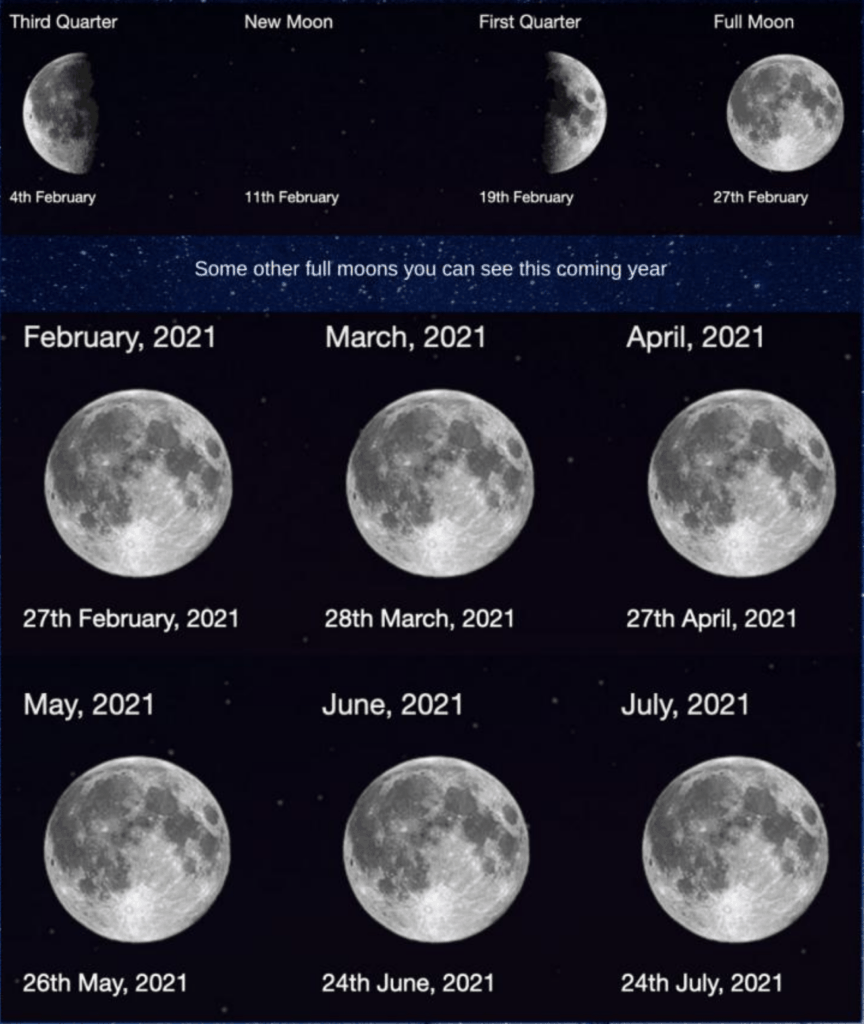February brings a host of night sky activity that will surely delight. On the 6th a very bight Venus will pass Saturn, if you look to the east-southest horizon just before dawn you will be able to see them together easily in the same view. On the 10th in the same view you will also be able to spy the slim crescent of the old Moon. On the 11th however the Moon will officially reach its new Moon phase. While new, the Moon is travelling between Earth and the Sun light can only reach the far side of the Moon, and the Moon is in the same region of the sky as the Sun, the moon becomes completely hidden from view for about a day. The new Moon will then return to shine in the western evening sky.
On the 13th at about 7.15pm the Pleiades cluster (otherwise known as the Seven Sisters) will be easily visible in the southern sky all night. The cluster is composed of medium bright hot blue stars names Asterope, Merope, Electra, Maia, Taygeta, Celaeno and lcyone. In Greek mythology, thos characters were the daughters of Atlas and half sisters of Hyades.

On the 14th (Valentines Day) lovers might appreciate the night skiys brightest star, Sirius as it reaches its highest point over the souther horizon at around 9.30pm.
February sees a lot of Moon activity. On the 17th the crescent Moon will aid a good view of Uranus and in the 18th it becomes the turn of Mars. On Friday 19th of February the Moon in its first quarter passes Taurus. On the 21st the Moon is in what is known as the winter Hexagon (also know as the winter Football and winter Circle). Composed of the brightest stars in the constellations of Canis major, Orion, Taurus, Auriga, Gemini and Canis Minor – specifically Sirius, Rigel, Aldebaran, Capella, Castor and Pollux and Procyon. After dusck, the huge pattern will stand upright in the south-eastern sky, the Milky Way passing vertically through the middle. The Hexagon is visible during evenings from mid-November to spring every year.
On Satrurday the 27th February the full Moon, known as the Snow Moon or Hunger Moon, always shines in or near the stars of Leo. Since its opposite teh sun on this day of the lunar month, the Moon is fully Illuminated, adn rises at sunset and sets at sunris. when full, no shadows are cast by the lunar terrain – so all of the Albedo variations are produced by the Moons geology and is super bright!

